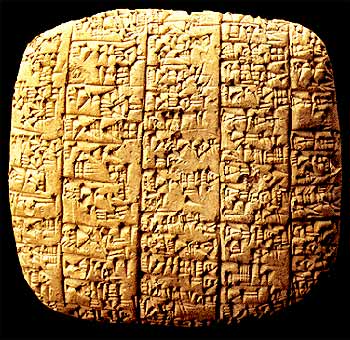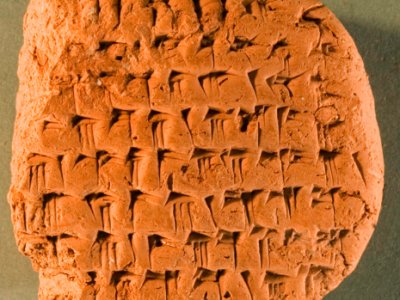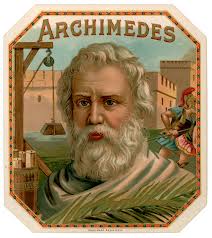Mathematics and
Deductive reasoning
In the 4th century BC the Greek mathematician Euclid opened a school in Alexandria where he developed the properties of numbers. In his thirteen volume treatise, Elements, he confirmed Pythagoras’ theorem and defined two and three-dimensional geometry to calculate shapes and sizes, which helped establish properties in space (the first Latin edition, translated from Arabic, was published in Venice in 1482.)
The Ancient Greeks borrowed the mathematical method of observation from ancient Babylonia and Egypt and added a new element: irrefutable proof (axioms) that cannot be contradicted.
In the 7th century BC, Thales, philosopher and engineer called the father of deductive reasoning, found ways to measure the distance of ships at sea and the height of tall objets by their shadow.
In the 6th century BC the astrologer Eudoxus questioned the traditional view of the earth as the center of the universe. The idea was so preposterous his claims were rejected and he had no way of proving his case.
Pythagoras thought up the Pythagorean Theorem, which calculates the proportions of a triangle (a2 + b2 = c2) and set the foundations for two-dimensional geometry. He maintained one could not understand philosophy if one didn’t understand mathematics.
The word calculus stems from the Greek word khalix and the Latin word calx, which means “pebble.”
The necessity to write things down came when humans began trading and calculations were imprinted on small clay stones.


Ptolemy invented the sundial and advanced the study of optics and reflective light. He followed the conventional belief that the earth was the center of the universe and, in his book Almagest, went to great lengths to adapt the movements of the sun and the planets based on this assumption. If the Ptolemaic system was scientifically unsound it fit into Church doctrine.
The word "algebra" was coined in the 9th century by Mohammed ibn Musa al-Khwarizmi, mathematician, historian and librarian for the court of Baghdad. The name stems from the Arab al-jabr and means “restoration.”
One distinguished mathematician in the 11th century was the Persian astronomer and poet Omar Khayyam. Though he contributed to science in many ways, he’s best known for his long poem Rubayyat (on the beneficial properties of wine.) In the 13th century Leonardo Fibonacci, or Leonardo of Pisa, borrowed the Arabic system of “successive approximation” to arrive at a solution.
Copernicus, in the 16th century, contested the earth’s central role and concluded that it rotated around the sun. With the invention of the telescope in the early 17th century Galileo and Kepler were able to confirm his theory. The mathematician Pascal thought up geometric geometry (Pascal’s Theorem) when he was 16. Pascal is responsible for inventing the adding machine and studied atmospheric pressure on liquids with the Italian physicist Torricelli. He and the Frenchman Pierre de Fermat advanced physics with their theory of probabilities.
The mathematician Archimedes was born in Syracuse in the 3rd century BC but studied and lived in Alexandria. His invention of the hydraulic screw to change water levels came to him while he was taking a bath. He invented the catapult to defend Syracuse against Rome during the 2nd Punic War and allegedly figured a way to burn down enemy ships by erecting huge mirrors to deflect the sun’s rays.
Though technically calculus - variable quantities in respect to one another - was discovered by Newton and Leibniz in the 17th century, Archimedes thought of it first. He probably got the idea from the Egyptians who had already calculated the mass of their pyramids. Archimedes was killed by a soldier while working out a mathematical problem in the sand and his last words were: “Don’t disturb my diagrams.” Of his books that survive are: Floating Bodies and The Sand Reckoner.
In the 2nd century BC the Greek astrologer Hipparchus derived a method of locating a geographic position by measuring its latitude and longitude. He catalogued at least a thousand stars and measured the length of the year by the sun. Hipparchus’ work in the field of trigonometry was recorded by the mathematician Ptolemy in the 2nd century AD.
